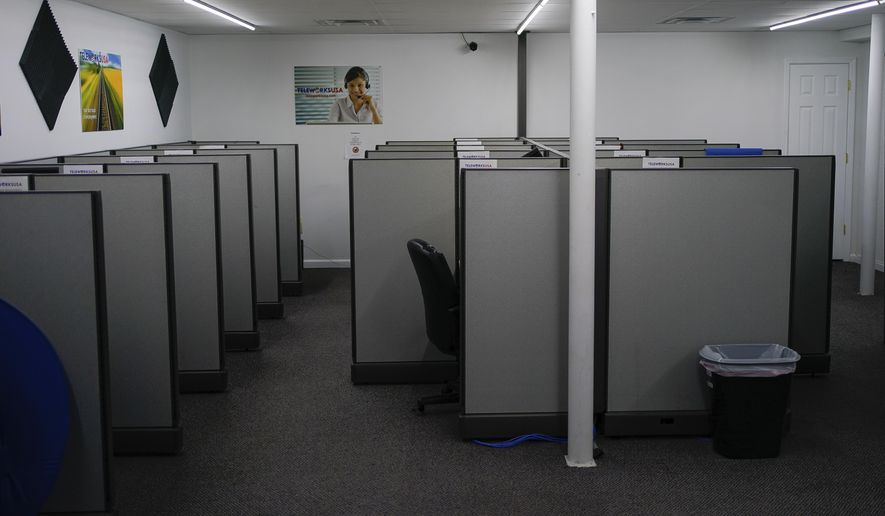The Agriculture Department is headquartered at the gateway between Washington and Virginia in a building rich with history — but on any given day, roughly 90% of it sits empty.
That’s not an anomaly.
The Government Accountability Office surveyed two dozen federal agencies and found they averaged a roughly 80% vacancy rate during the study period earlier this year.
Not a single agency topped 50% use, GAO reported.
Investigators said excess space has been a “long-standing challenge,” but the coronavirus pandemic and growing demands by employees to be allowed to telework raised the problem to crisis levels, with the government paying for massive square footage it just doesn’t need anymore.
“During the pandemic, federal agencies operated under a maximum telework posture, with many employees working away from the office,” said David Marroni, acting director of GAO’s physical infrastructure team. “As the country emerges from the pandemic and agencies continue to offer telework as an option, the federal government has a unique opportunity to reconsider how much and what type of office space it needs.”
But getting agencies to rethink their space is a tough sell.
For one thing, agency bigwigs say the government will have to spend money to save money. The Agriculture Department told investigators that it is aware of its challenges, but figuring out a hybrid office where in-person and remote work are both accommodated would require millions of dollars of investment in planning — money the agency doesn’t have.
Officials also told investigators they worry that the telework boom might be a fading fad, and if they ditch the space they could be caught in a bind when workers do come rushing back.
And agencies are reluctant to share, the GAO said.
“One official said their leadership is reluctant to share headquarters space with other agencies because it could lower their perceived standing as a cabinet-level agency,” Mr. Marroni said.
GAO measured usage by taking the total amount of square footage available for employee use at an agency’s headquarters and then dividing it by the number of people who actually entered the building.
The study looked at use rates for one week each in January, February and March.
It reported results for the 24 agencies broken down into four tiers.
At the bottom, averaging just 9% capacity, were Agriculture, the Social Security Administration, the Office of Personnel Management, the Small Business Administration, the Department of Housing and Urban Development and even the General Services Administration, which acts as the government’s chief landlord.
The second tier included the Education, Transportation and Veterans Affairs departments, the Environmental Protection Agency, the National Aeronautics and Space Administration and the National Science Foundation. They averaged a 16% use rate.
The third tier included the Energy, Labor, Interior and Health and Human Services departments, the U.S. Agency for International Development and the Defense Department’s building at Mark Center in Alexandria, Virginia. They averaged a 23% use rate.
The six agencies that did the best were the Commerce, Justice, State, Treasury and Homeland Security departments and the Nuclear Regulatory Commission. They averaged 36% use, but none topped 50% use.
GAO said several agencies objected to its measurements, saying vacations, illnesses and other normal ebbs and flows may have affected the study period. Those agencies said it made more sense to review use at peak capacity.
GAO said one problem is that the Office of Management and Budget, the nerve center of the Executive Branch, hasn’t set benchmarks for agencies to achieve in terms of office space use.
OMB agreed that it should develop benchmarks.
Most of the two dozen agencies studied by GAO didn’t provide official responses to the report.
USAID did respond, saying it has been working on the issue.
“USAID has reduced its footprints as it saw an opportunity to restructure its portfolio, taking steps to make cost-effective decisions by collecting data on how often employees report to our offices,” wrote Colleen Allen, USAID’s assistant administrator for bureau management. “This allows us to ensure the agency consistently implements sound capital planning practices to optimize our portfolio to achieve mission goals in a cost-effective way.”
• Stephen Dinan can be reached at sdinan@washingtontimes.com.




Please read our comment policy before commenting.